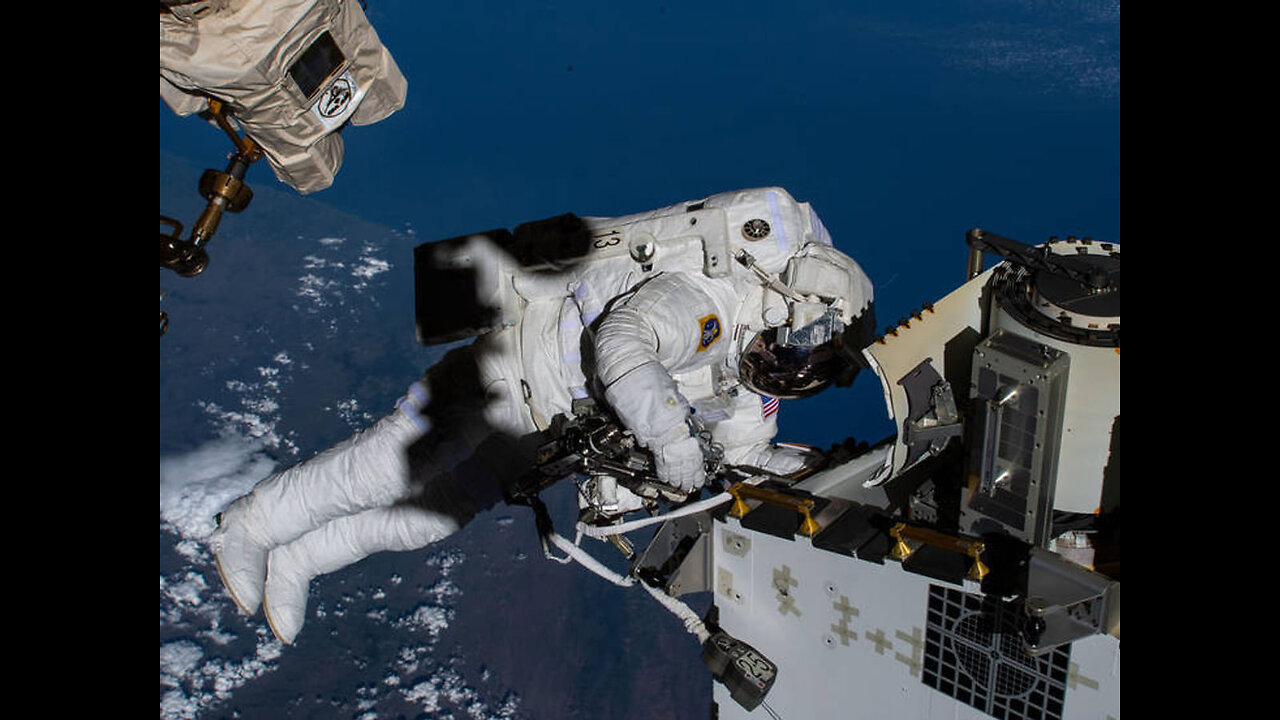Premium Only Content

Astronauts_accidentally_lose_a_shield_in_space_(GoPro_8K)
In a scenario where astronauts accidentally lose a shield in space, several key details come into play. The shield can refer to a variety of objects, depending on the context, such as a protective panel, satellite dish, or even a piece of equipment used to shield against radiation.
Firstly, the environment of space is characterized by the absence of gravity, extreme temperatures, vacuum, and often high-speed debris. These conditions make any accidental loss or damage of equipment potentially dangerous and consequential.
The loss of a shield can have several implications. If it is a protective panel on a spacecraft or satellite, it may leave some components or instruments exposed to the harsh space environment, risking damage from micrometeorites, radiation, or extreme temperatures. This could affect the overall integrity of the spacecraft or satellite, potentially impacting its functionality or even jeopardizing the mission's success.
If the shield is a satellite dish or antenna, losing it could result in a loss of communication capabilities. Communication with mission control or other satellites may become compromised, hindering the ability to transmit or receive critical data, commands, or even video/audio feeds.
Furthermore, if the shield is designed to protect against radiation, its absence might expose astronauts or sensitive equipment to harmful radiation levels, potentially endangering their health or affecting the functioning of delicate instruments.
Losing a shield in space is a serious issue that would require immediate attention and assessment by mission control and the astronauts themselves. Possible mitigation options could include designing and implementing temporary solutions to protect exposed components or instruments, reconfiguring communication systems to compensate for the lost dish, or implementing additional radiation shielding measures to minimize potential risks.
Overall, an accidental loss of a shield in space can have significant consequences for the safety, functionality, and success of a mission, requiring swift action and problem-solving to address the situation effectively.
-
 56:02
56:02
Sarah Westall
7 hours agoBiohacking & Peptides: Weight loss, Anti-Aging & Performance – Myth vs Reality w/ Dr. Diane Kazer
37.3K14 -
 11:22
11:22
Bearing
17 hours ago"Anxious & Confused" Federal Workers FREAK OUT Over DOGE Efficiency Email 💥
47.8K60 -
 1:31:20
1:31:20
Flyover Conservatives
1 day agoUS STOCK MARKET: Sinking Ship - Dr. Kirk Elliott; How I Fought Back Against Woke Schools & Stopped Gender Bathrooms - Stacy Washington | FOC Show
57.2K1 -
 1:08:09
1:08:09
Donald Trump Jr.
12 hours agoFBI Dream Team, Plus Taking Your Questions Live! | Triggered Ep.219
196K252 -
 7:32:37
7:32:37
Akademiks
11 hours agoDrake and PartyNextDoor '$$$4U' Album Sells 250K first week. BIG AK IS BACK.
116K11 -
 3:12:08
3:12:08
MyronGainesX
10 hours ago $31.49 earnedDan Bongino Named As Deputy Director Of FBI And CPAC Recap
94K27 -
 3:12:31
3:12:31
vivafrei
10 hours agoBarnes Live from Seattle - Defending Benshoof in a Case that is CRAY CRAY!
143K45 -
 2:12:12
2:12:12
Robert Gouveia
10 hours agoLiberals EXPLODE over Elon's Email; Lawsuits FLY; Sanctions?? Congrats Dan!
110K36 -
 1:33:36
1:33:36
Redacted News
11 hours agoBREAKING! PUTIN LAUNCHES MASSIVE OFFENSIVE IN UKRAINE AS EUROPEAN LEADERS PUSH FOR MORE WAR
187K246 -
 44:39
44:39
Kimberly Guilfoyle
11 hours agoBetter Days Ahead for the FBI, Live with Asm Bill Essayli & John Koufos | Ep.199
118K26